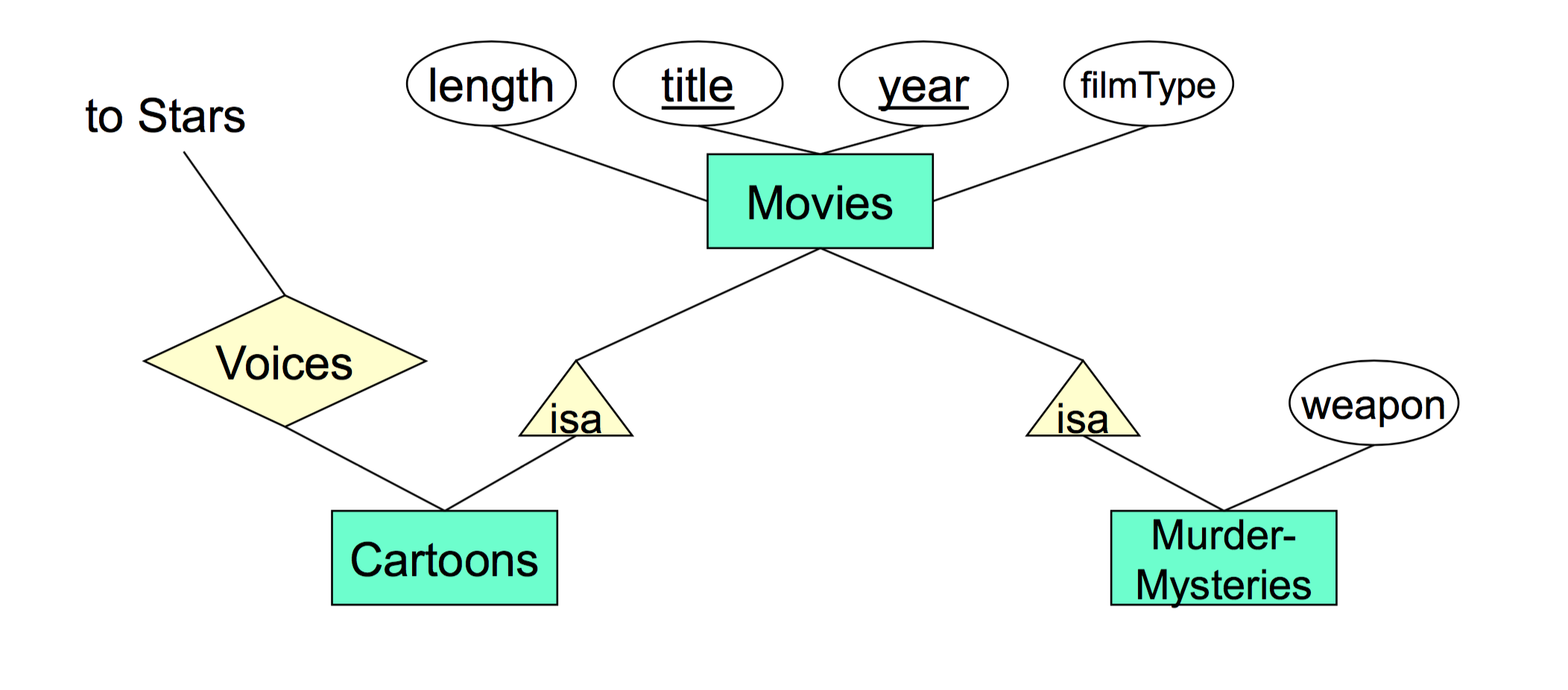E/R Diagrams to Relations¶
Table Terminology¶
In a table
- Headings are attribute names.
- Rows are tuples.
- Elements in rows are tuple components
Entity Sets to Relations¶
Example¶
The tables are,
Movies: (title,year,length,filmType,studioName)Studios: (name,address)Stars: (name,address)StarsIn: (title,year,starName)
The movies table would look like,
title |
year |
length |
filmType |
studioName |
|---|---|---|---|---|
Godzilla |
2014 |
200 |
feature |
Fox |
| … | … | … | … | … |
isa Relationships¶
We can use isa relationships to show inheritance relations.

We use two approaches to
Object-Oriented Approach¶
In the Object-Oriented (OO) approach, every subclass has it’s own relation. For the example above we have the following tables
Movies(title, year, length, filmType)Cartoons(title, year, length, filmType)MurderMysteries(title, year, length, filmType, weapon)Cartoon-MurderMysteries(title, year, length, filmType, weapon)Voices(title, year, starName)
Issue: This approach requires many tables to implement, specifically if we have a root and $n$ children we require $2^n$ tables.
Entity/Relationship Approach¶
In the Entity-Relationship approach, which is most common, the example above has the following tables
Movies(title, year, length, filmType)MurderMystery(title, year, weapon)Cartoons(title, year)Voices(title, year, name)
Issue: We must do several table lookups to get the information for a single object. For example if we want the length and weapon for a murder mystery we have to look in Movies and MurderMystery.
